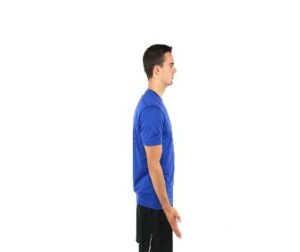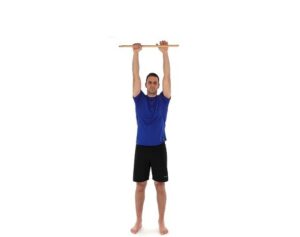- Reference Number: HEY1292/2022
- Departments: Orthopaedics
- Last Updated: 31 May 2022
Introduction
This leaflet has been produced to give you general information about your injury. We understand you may not have seen a clinician face to face in fracture clinic however, most of your questions should be answered by this leaflet. If after reading it, you have any concerns or require further explanation, please do not hesitate to contact the fracture clinic team. Contact details are available at the end of this leaflet.
What is a suspected scaphoid fracture?
Following a consultant review of your notes and x-rays it is likely that you have a wrist sprain as no definite fracture has been identified. However, we have not been able to exclude that you have sustained a scaphoid fracture.
The scaphoid is a small bone in the wrist located on the thumb side of your hand. Injury to this bone can occur after a heavy fall on an outstretched hand but it is not always clear on initial x-rays whether it is broken or not.
How should it be treated?
This injury is initially treated simply in a wrist splint for 2 weeks to help reduce your pain. It can be worn at night and removed for washing and dressing.
When can I return to driving?
You will not be insured to drive whilst you are wearing a splint. It is always good to check with your insurance company however, we advise it should be safe to return to driving when:
- You are no longer using a splint or any type of immobilisation
- You can comfortably grip the steering wheel, move the gear stick, pull up the hand brake and activate the indicators
- You can perform an emergency stop
What should I do in the first few days?
Controlling the pain and swelling by following the principles of RICE are important:
R REST
Complete rest is not advisable. You should use your fingers and hand whilst in the splint for simple everyday tasks like washing, dressing and eating.
Arm exercises are very important; you should move your shoulder, elbow and fingers regularly to prevent stiffness at these joints. The exercises below can be performed 4 times daily.
- Support your elbow on a table with your wrist straight and fingers pointing towards the ceiling.

Bend your fingers into your palm as tightly as you can. Hold the stretch 10 seconds.
Now stretch your fingers as wide as you can. Hold the stretch for 10 seconds.
2. Remove the arm from the sling and straighten it down by your side.


Now bend the elbow as much as possible.
Repeat 10 times slowly in each direction.
3. Bend your elbow and tuck it into your side.

Turn your palm as far as possible upwards without moving your elbow. Feel the stretch and hold for 10 seconds.
Now turn your hand back over so your palm faces downwards, feel the stretch and hold for 10 seconds.
4. Shoulder flexion

Hold a long stick in both your hands.
Allow your unaffected arm to help your affected arm lift forward and upward as high as possible.
In the early stages, you may find this easier laid down.
I ICE
Ice will help reduce the pain and so should be applied for 10 to 15 minutes every 2 to 3 hours. This will also help to reduce any swelling.
There are many different ways in which ice can be applied however crushed ice, in the form of frozen peas for example, is the most effective. Whichever method you choose it is important that you wrap the ice in a damp towel, in order to prevent it from ‘burning’ the skin.
- Only use an ice pack on areas that have normal skin sensation i.e. where you can feel hot and cold
- Do not apply ice to an open wound
- Do not apply an ice pack to an area that has poor circulation
- When you apply ice to your skin, check the skin every five minutes and stop using it if:
- the area becomes white, blue or blotchy
- the area becomes excessively painful, numb or tingles
C COMPRESSION
The splint will provide some compression however if you develop any signs of poor circulation such as tingling, numbness, blueness of the skin of the foot and increasing pain the splint should be removed.
E ELEVATION
If you have swelling in your wrist or hand sit on a chair and place your elbow on cushions so that it is level or slightly higher than your shoulder. In this position, point your hand towards the ceiling, then open, and close your hand slowly for 10 minutes. This will help to reduce any swelling further.
Do I require a follow up?
Following your virtual appointment today, you have been booked a two-week follow up fracture clinic appointment, which you should receive through the post. At this appointment, you will have a repeat x-ray and the wrist will be examined before a plan is made.
Sometimes these injuries settle down earlier than 2 weeks and, if it is no longer painful, it is fine for you to start taking the splint off sooner. Start by taking it off for short periods of time, and at night, and wean off gradually. If at 2 weeks, you have no remaining pain or symptoms and do not feel you require a follow up we would be grateful if you cancel your appointment on the number below.
How can I contact the Fracture Clinic?
If you have further queries relating to this injury before this time, please call the fracture clinic on tel: 01482 674378 during clinic hours 9.00am to 4.30pm Monday to Friday. Please do not choose an option and when prompted leave a message if there is no answer and we will aim to get back to you within the same working day.
This leaflet was produced by the Orthopaedic Department, Hull University Teaching Hospitals NHS Trust and will be reviewed in May 2025
General Advice and Consent
Most of your questions should have been answered by this leaflet, but remember that this is only a starting point for discussion with the healthcare team.
Consent to treatment
Before any doctor, nurse or therapist examines or treats you, they must seek your consent or permission. In order to make a decision, you need to have information from health professionals about the treatment or investigation which is being offered to you. You should always ask them more questions if you do not understand or if you want more information.
The information you receive should be about your condition, the alternatives available to you, and whether it carries risks as well as the benefits. What is important is that your consent is genuine or valid. That means:
- you must be able to give your consent
- you must be given enough information to enable you to make a decision
- you must be acting under your own free will and not under the strong influence of another person
Information about you
We collect and use your information to provide you with care and treatment. As part of your care, information about you will be shared between members of a healthcare team, some of whom you may not meet. Your information may also be used to help train staff, to check the quality of our care, to manage and plan the health service, and to help with research. Wherever possible we use anonymous data.
We may pass on relevant information to other health organisations that provide you with care. All information is treated as strictly confidential and is not given to anyone who does not need it. If you have any concerns please ask your doctor, or the person caring for you.
Under the General Data Protection Regulation and the Data Protection Act 2018 we are responsible for maintaining the confidentiality of any information we hold about you. For further information visit the following page: Confidential Information about You.
If you or your carer needs information about your health and wellbeing and about your care and treatment in a different format, such as large print, braille or audio, due to disability, impairment or sensory loss, please advise a member of staff and this can be arranged.

